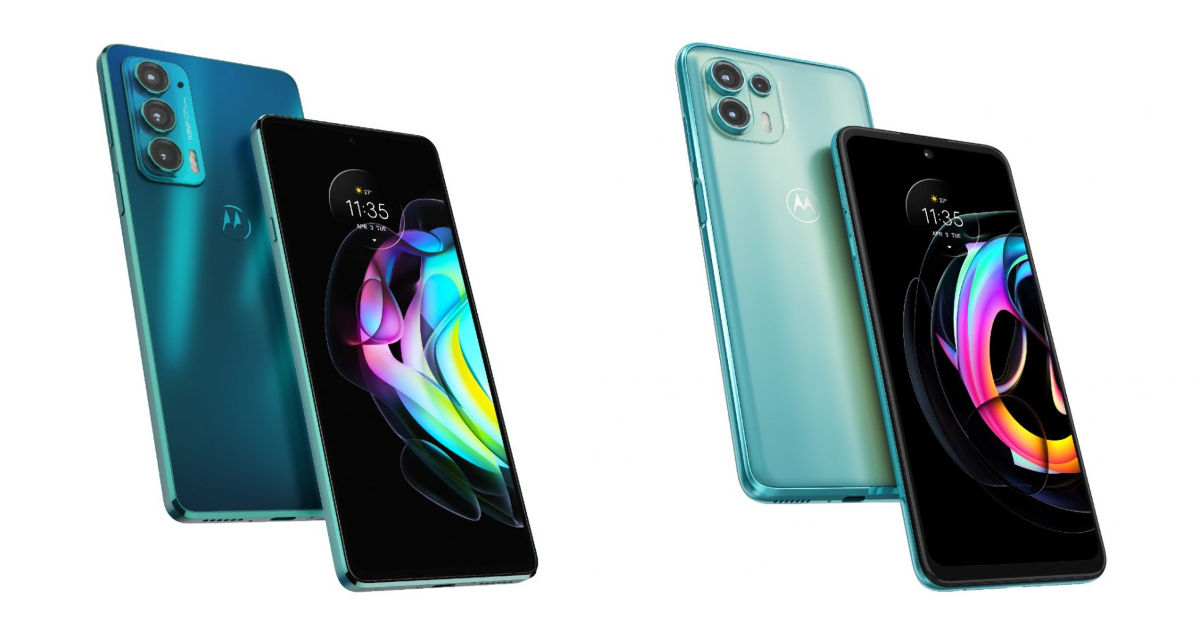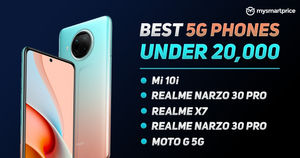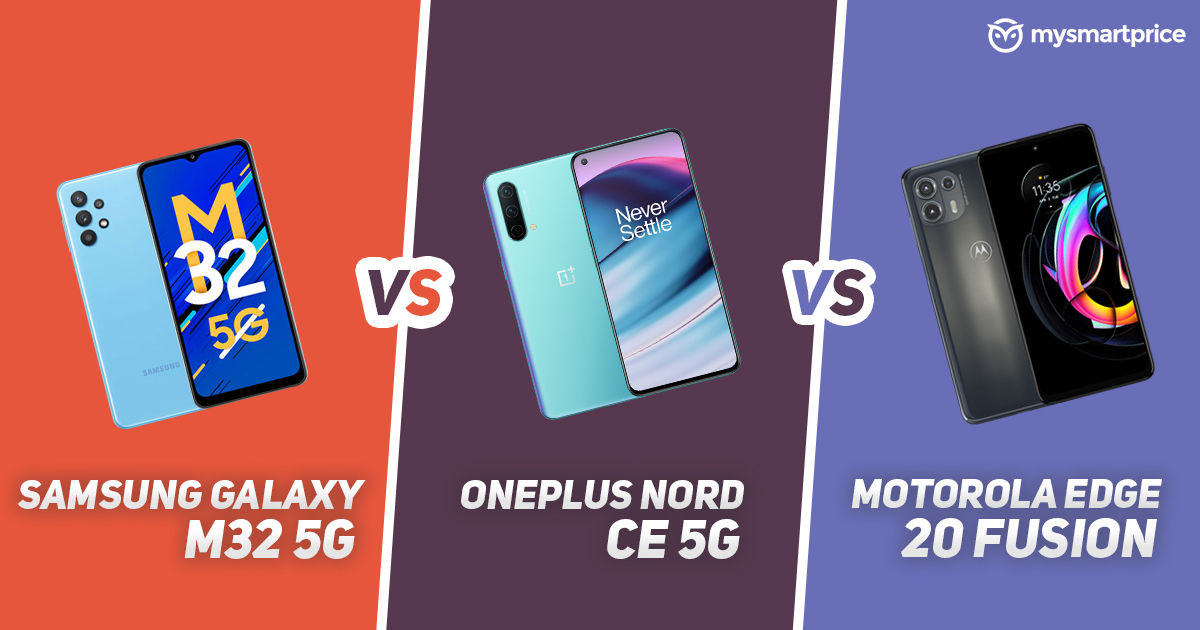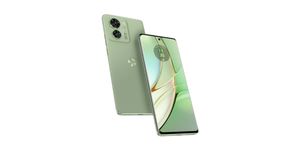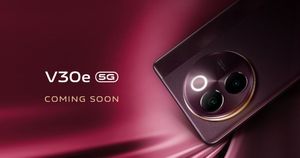
My first impressions of the Moto Edge 20 Fusion were very positive. But, first impressions are just that – impressions. It is almost always positive by default unless something glaring bothers you. Most phones are generally good these days. Which is why, it becomes doubly important that we evaluate the Edge 20 Fusion objectively and thoroughly, so you can make an informed decision.
Design

You know how I had lamented that the Moto Edge 20 Fusion doesn’t have a unibody design. Well, it seems, there are no unibody designs anymore. The mid-frame is almost always a separate material on a smartphone these days. So, what was my problem with the Edge 20 Fusion’s design then? Well, it’s just that the frame extends too far out into the rear panel. And, that looks odd. However, this helps with creating a wider frame and the ergonomics are improved as a result. And, the in-hand feel of the phone improves drastically as a result.
But, it goes without saying that the Nord CE is the smallest, thinnest, and the lightest of all the three phones in this comparison. If you want a compact phone, the Nord CE is the way to go. But, between the Moto Edge 20 Fusion and the Mi 10i, the Edge 20 Fusion is lighter because of the use of an all-plastic build. The Mi 10i is a fair bit heavier and bigger because it uses a Corning Gorilla Glass 5 rear panel. I would say, it makes it very heavy and I’d rather have a plastic body to make the phone more comfortable to use.
The rear camera module is quite different on all the three phones. But the Moto Edge 20 Fusion is the one that just doesn’t sit flat on a surface and tends to wobble a lot. Also, all the three have a nice matte finish but the Moto Edge 20 Fusion is more prone to smudges than the other two. As for the colours, it is a very subjective topic, but I am still in love with the Mi 10i’s very unique Pacific Sunrise shade. I know it is not going to be everyone’s cup of tea but go live a little. Stop being boring.

All the three phones come with a USB Type-C 2.0 port at the bottom with a headphone jack as well. Now, I tested my 1More Triple Drivers on the three phones, and natively, the audio quality of the Mi 10i was the best. It’s all thanks to the support for Hi-Res audio support natively. I could hear more microdynamics, details and textures compared to the other two phones. In fact, the Moto Edge 20 Plus’ headphone jack sounded the most closed off and unresolving. The Nord CE’s DIRAC HD tuning does help make it sound the second best.
As for the speakers, you get a dual speaker setup only on the Mi 10i. Obviously, the Mi 10i wins here with its stereo separation and tighter bass response. But, between the Edge 20 Fusion and the Nord CE, the Nord benefits from its Super Linear speaker that adds more volume to the low end. Anyway, why don’t you take a listen and see if my analysis is right?
Now, I must mention that the Edge 20 Fusion definitely has an Edge (all pun intended) over the other two with its dedicated Google Assistant button. It is definitely a functional advantage. Another functional advantage it shares with the Mi 10i is both the phones offer a hybrid SIM tray with support for microSD cards. The Nord CE 5G doesn’t offer that support. Plus, you get IP52 rating on the Edge 20 Fusion, which is just awesome.
As for the fingerprint scanners, you get a side-mounted scanner on the Mi 10i and the Moto Edge 20 Fusion, and an in-display one on the Nord CE. I couldn’t tell any difference in unlocking speeds except for the fact that the Edge 20 Fusion had a slower animation speed. That is all.
Overall, I’d pick the Edge 20 Fusion over the others for its functional advantages and the Nord CE 5G for a more cohesive and uniform design language For example, something as basic as maintaining the symmetry in the ports at the bottom edge shows how OnePlus frets over tiny design elements like these.
Display

The Moto Edge 20 Fusion and the Nord CE use an OLED panel with 90Hz refresh rate. The Mi 10i does offer a higher 120Hz refresh rate but it is an IPS LCD display. What is the Moto Edge 20 Fusion’s trump card you ask? Well, clearly it is the fantastic 10-bit panel that can spit out 1 billion colours compared to the 16 million possible on the Mi 10i and the Nord CE.
I had the privilege of checking these displays side-by-side and boy the difference is palpable or what. The same HDR video on the three displays looks so much more vibrant and the extended colour gamut just brings out all the shades in the gradient visual. In fact, the Mi 10i was actually stuttering during the 4K HDR playback on YouTube.
Moving on, the default tuning of the Natural mode works well in optimising content. For example, you can trust the display to show close to accurate colours of the picture you just captured using the camera. I didn’t feel the same way with the Nord CE or the Mi 10i’s display.
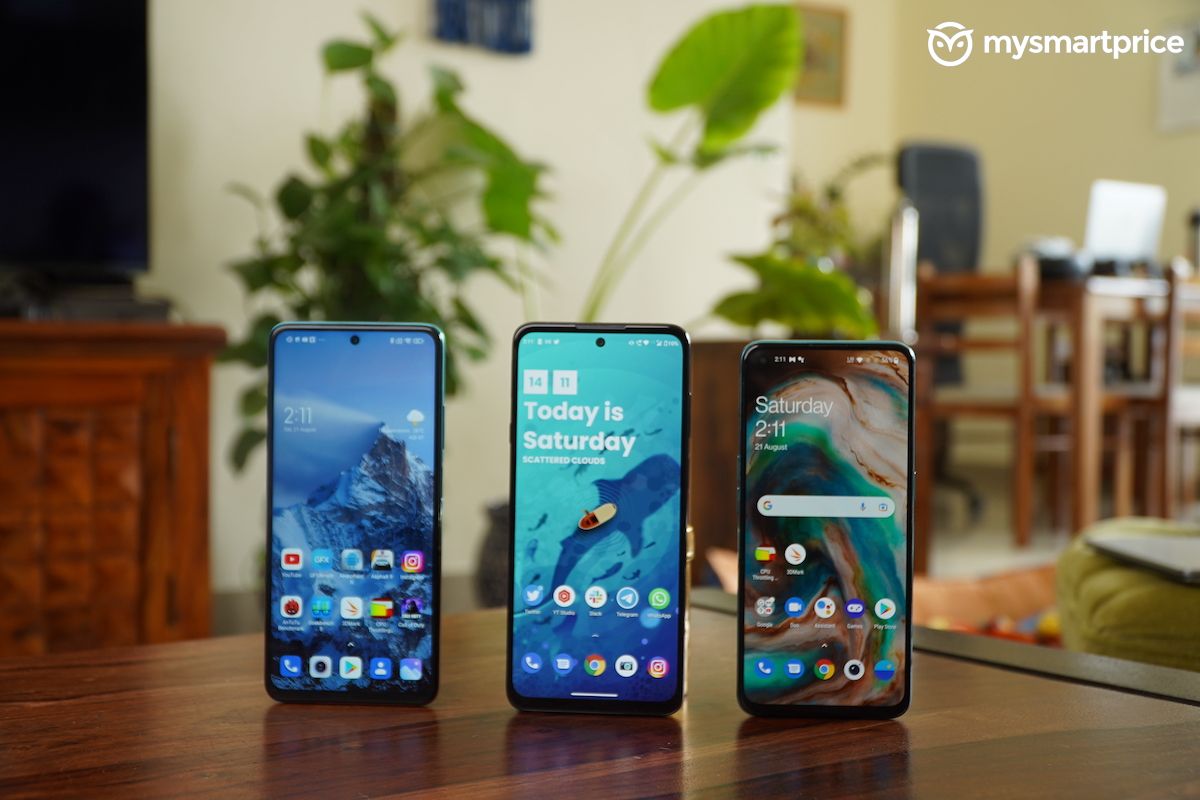
By the way, as of now, only the Nord CE supports HDR playback on Netflix. But you know what, I checked it side-by-side with the Edge 20 Fusion. I had to literally squint to spot differences. And, truth be told, I couldn’t find any!
Although, in my 10% brightness testing window for HDR, the Nord CE clearly comes close to the 1000nits mark. The Moto Edge 20 Fusion doesn’t get as bright and hovers around the 660 nits mark, which is how bright it gets in regular high brightness mode as well. In fact, in regular HBM mode, even the Nord CE touches 660 odd nits. The less said about the Mi 10i’s brightness the better. It can barely touch 450 nits in HDR video and regular usage.
Moving on from the brightness test, my main gripe with the otherwise great display on the Edge 20 Fusion, is the absolutely asymmetrical bezel and chin size. Plus, the odd curvature on the internal cutout. It can trigger you even if you have a slightest inclination towards neat, symmetrical designs.
As for the haptic feedback on these phones, all three are equally bad. You get a soft vibration motor that cannot achieve any localised, precision haptic response.
Overall though, the Edge 20 Fusion’s display is the G.O.A.T in this price range.
Camera
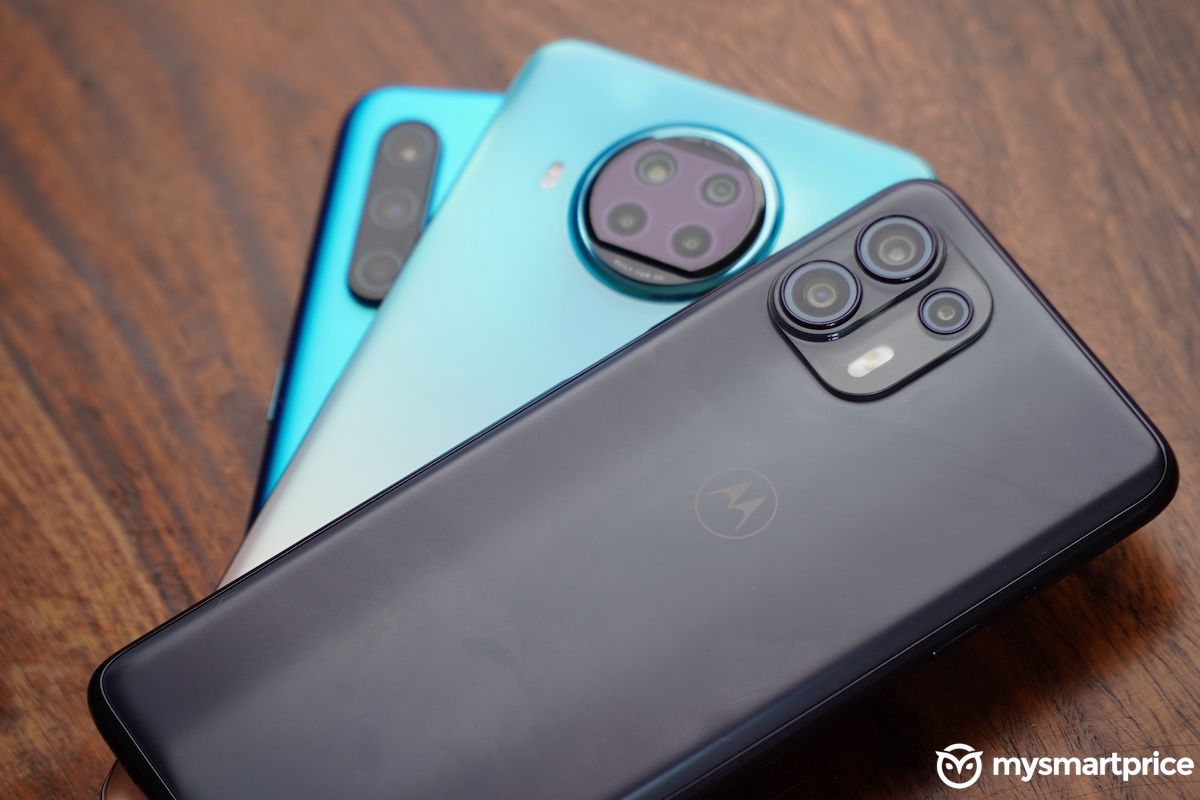
We have a dedicated camera comparison of the Moto Edge 20 Fusion’s camera against the Mi 10i and the Nord CE. Go check that out for the picture quality differences. But, the gist is:
The Moto Edge 20 Fusion’s camera performance is good enough for most use cases but is also inconsistent whenever there is any processing like HDR or Portrait mode involved. But, truth be told, all the phones I’ve tested in this price range are super inconsistent anyway. I really can’t pick one winner from the three. I’d say go for the Edge 20 Fusion if you prefer natural colours, accurate-looking human facial tones, and can steer clear of scenes that require a good dynamic range algorithm. Go for the Nord CE for video recording and the Mi 10i for fantabulous low light performance. Hope that makes it easier to make a choice.
Full camera comparison: Moto Edge 20 Fusion vs OnePlus Nord CE vs Mi 10i Camera Comparison – 108MP vs 64MP!
Software
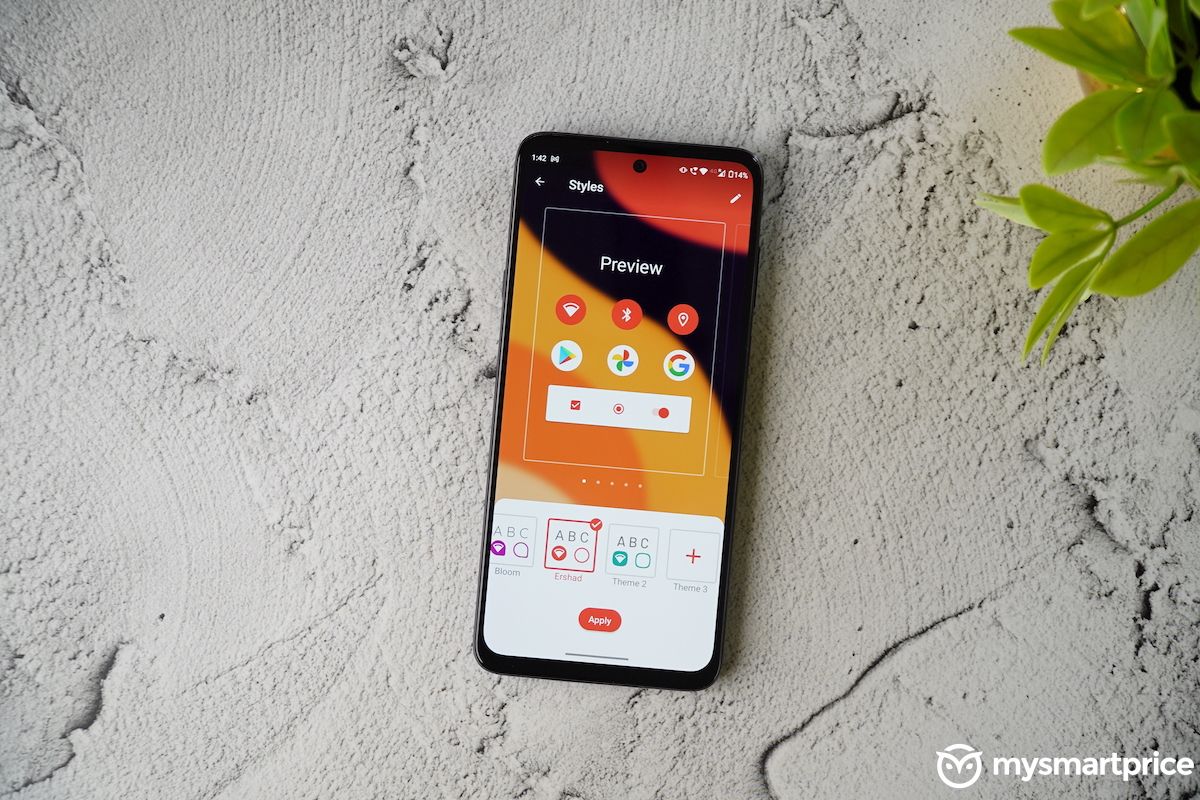
Coming to the software experiences on these phones, each have their own individual pluses and minuses. For the most part, I am a fan of Oxygen OS on the OnePlus Nord CE 5G, that is until it also gets the Color OS codebase-based Oxygen OS upgrade. Then, you will be stuck with random features floating around willy nilly in the background and the foreground. But for now, you get a clean fork of Android with very polished apps, features, and customisations galore.
That said, the Moto Edge 20 Fusion’s stock Android implementation with zero bloatware is also a dream to use. Heck, Moto doesn’t even have its own Gallery app. It uses only Google’s apps.
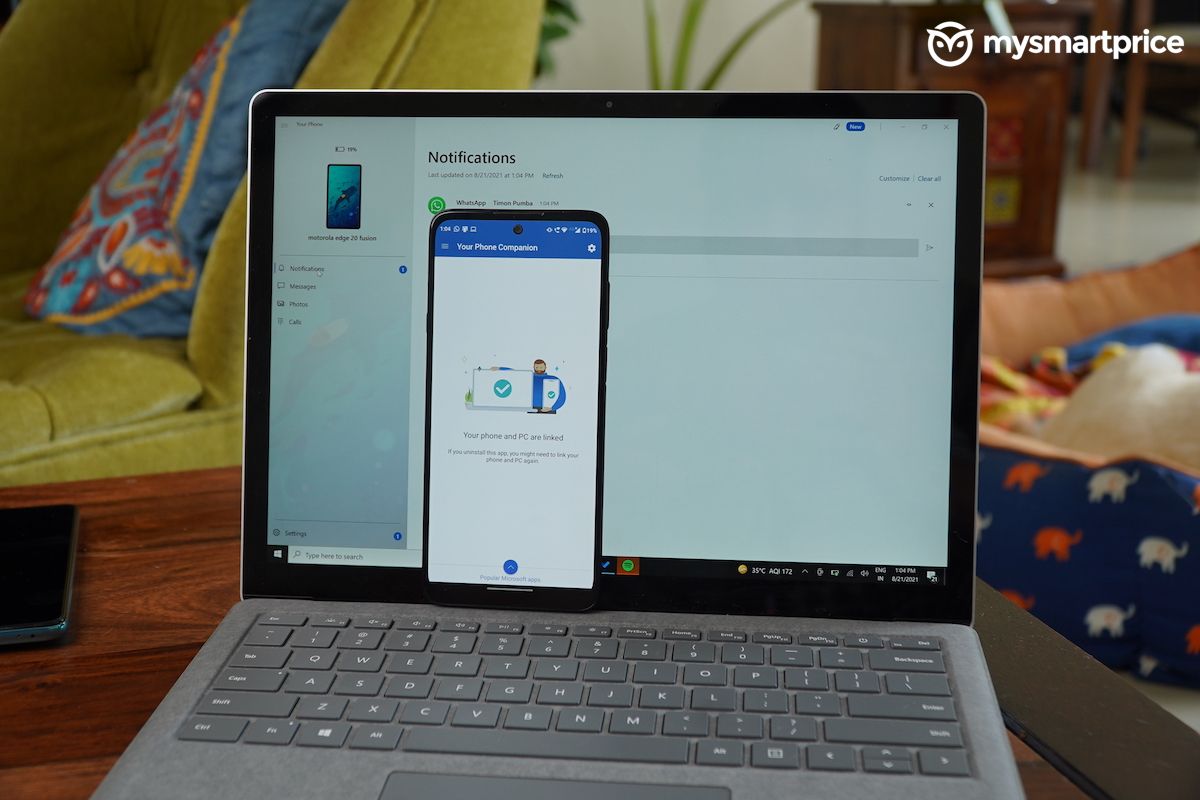
And, there are so many cool gestures that you can play around with – like Karate Chop to switch on the torch. Let’s not forget the very robust enterprise-grade Thinkshield Mobile security suite running in the background protecting your phone silently. Plus, Motorola has a new Ready For feature that is very similar to Samsung Dex but my only concern is that I don’t see the point of it on the Edge 20 Fusion since it works only on PCs and in Windowed mode that too. If you ask me, Microsoft’s Your Phone Companion, linking Windows to Android for syncing Messages, Calls, and Notifications is more than enough.
Now, MIUI 12.5 is definitely very feature-rich too and will appeal to a lot of folks as well. In fact, Xiaomi has now cleaned up a lot of the issues with respect to bloatware, and ads as well. You can expect a fairly clean experience. All that said, my choice for the favourite software experience, among these three phones, would be a tie between Oxygen OS on the Nord CE and Stock Android on the Edge 20 Fusion.
Also Read: OnePlus Nord CE 5G Review – Changing Tides | Comparison vs Mi 10i, iQOO Z3 5G
Performance
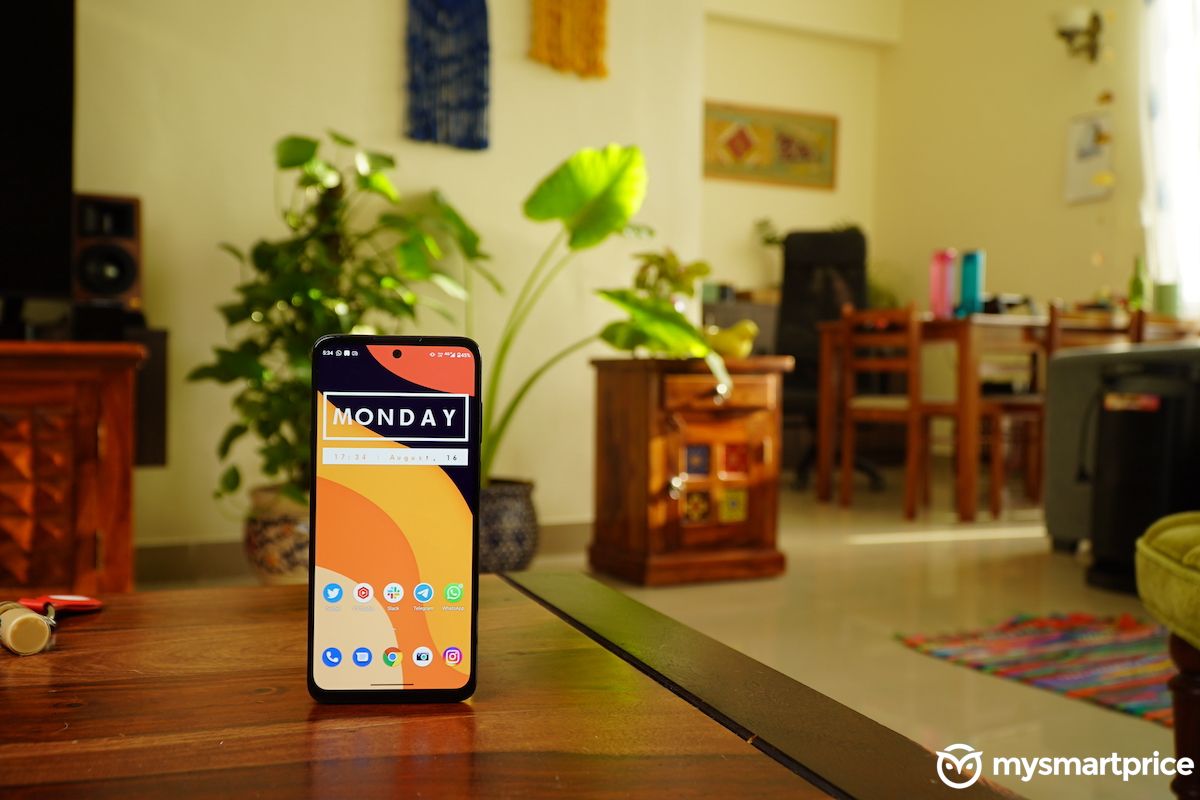
The Edge 20 Fusion has a Mediatek Dimensity 800U chipset and it is as powerful as the Snapdragon 750G inside the Nord CE and the Mi 10i. This is evident from the near-identical AnTuTu and Geekbench scores. In BGMI, the max graphics settings possible on all these phones is either Smooth/Ultra or HD/High. Basically, you can only achieve a maximum of 40fps. In COD, the max settings possible is Medium graphics and High frame rates on the Edge 20 Fusion. But, I feel it is an update away from offering High Graphics and Max frame rates support as it is available on the Snapdragon 750G inside the Nord CE 5G and the Mi 10i. You see, the Dimensity 800U is equally capable.
Moving on, I also checked out the CPU and GPU throttling performance of the three phones. In our 30min CPU throttle run, the Edge 20 Fusion was the most stable performer throttling to only 84% of its Max CPU capacity. The Nord CE was the worst going way down to 66% and the Mi 10i throttled to 78%. In fact, the Edge 20 Fusion was also the coolest of the three with respect to the internal CPU temperature.
In our 3DMark Wild Life Stress Test, all the phones hovered around the 99% stability, with the Nord CE leading the pack at 99.4% to be precise. But, the Edge 20 Fusion consistently had a higher loop score. And, as far as the temps are concerned, the Mi 10i got the hottest and lost the most battery life as well.
In general, I noticed that the Moto Edge 20 Fusion runs cooler and offers a better sustained performance. So, if you are going to be playing long sessions of BGMI and COD, you’d be better off with a Moto Edge 20 Fusion.
Battery Life
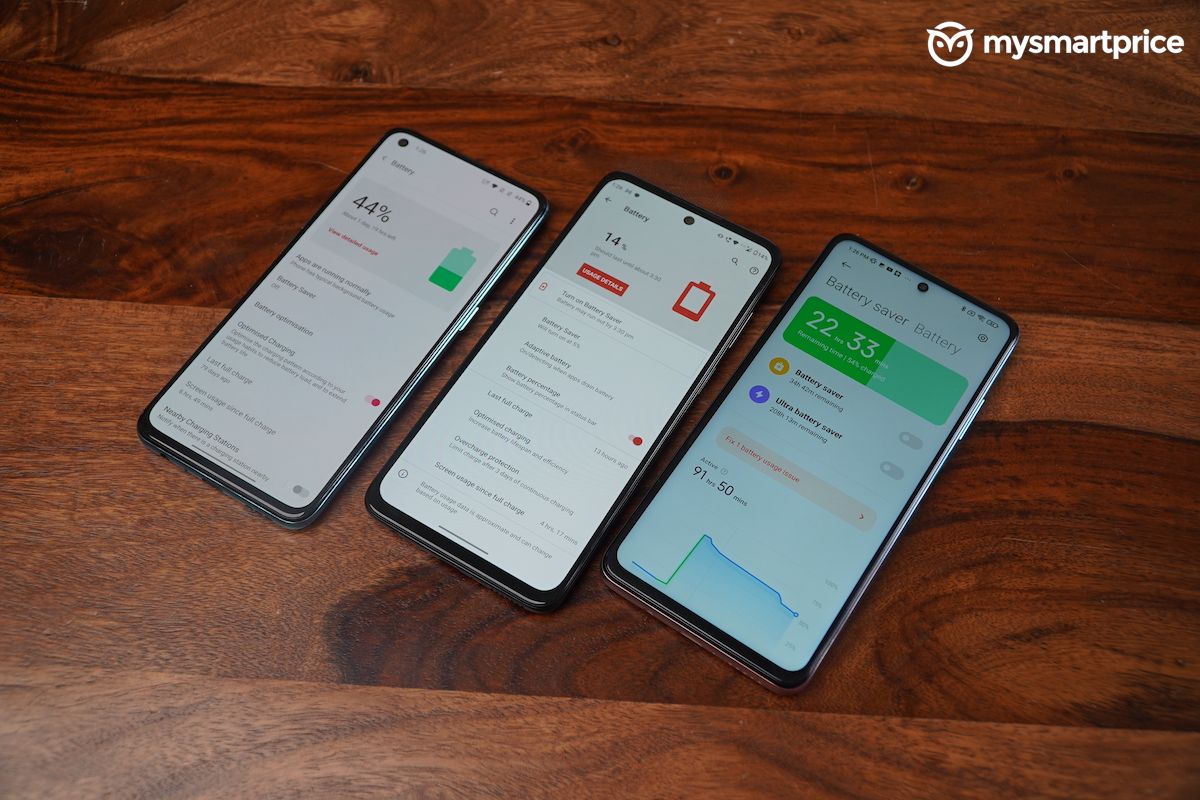 The Moto Edge 20 Fusion’s 5000mAh battery lasted me 7 hours of Screen on Time on a single charge. I actually expected it to be higher considering both, the Nord CE 5G and the Mi 10i, easily achieved over 8 hours of Screen on Time with smaller batteries. As for the charging speeds, the TurboPower 30W tech takes about 1 hour and 30 mins to top up the battery from 0 to 100%. This is considerably lower than the 58 minute charging time that the Mi 10i takes using its 33W charger or the 1 hour 3 mins that it takes to top up the Nord CE 5G using Warp Charge 30 tech.
The Moto Edge 20 Fusion’s 5000mAh battery lasted me 7 hours of Screen on Time on a single charge. I actually expected it to be higher considering both, the Nord CE 5G and the Mi 10i, easily achieved over 8 hours of Screen on Time with smaller batteries. As for the charging speeds, the TurboPower 30W tech takes about 1 hour and 30 mins to top up the battery from 0 to 100%. This is considerably lower than the 58 minute charging time that the Mi 10i takes using its 33W charger or the 1 hour 3 mins that it takes to top up the Nord CE 5G using Warp Charge 30 tech.
Now, while the Edge 20 Fusion’s battery life or charging speeds are not bad. It could’ve been better, in my opinion.
Network

As far as the regular 4G networking capabilities of the three phones are concerned, all three can do 4G carrier aggregation and the call quality is equally good. But, the one area where the Edge 20 Fusion beats the other two phones comfortably is in the 5G bands support. You get support for a whopping 13 5G bands on the phone as opposed to one on the Nord CE 5G and two on the Mi 10i. Although, for the foreseeable near future, this is just going to be a vanity metric. But yeah, if you plan to use a phone for three years, you might just get a glimpse of 5G in the phone’s lifetime.
Should You Buy the Moto Edge 20 Fusion?
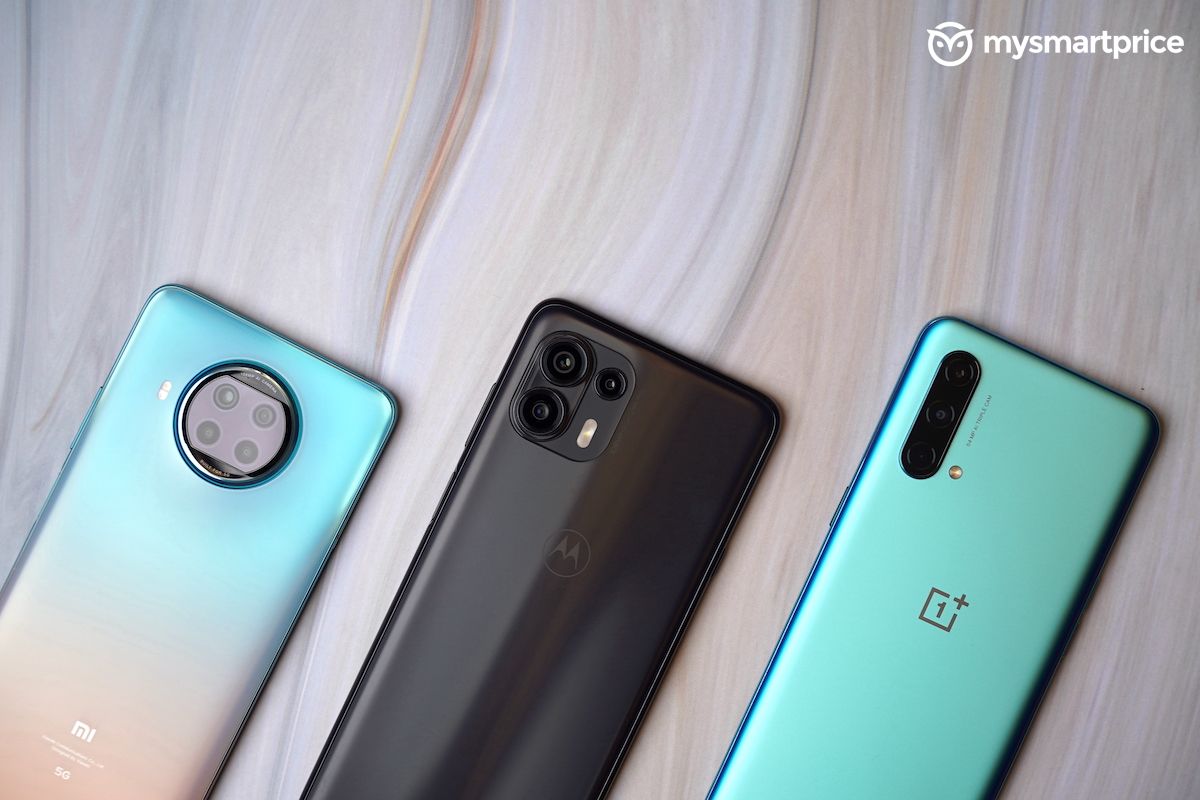
The Edge 20 Fusion has a lot of functional design advantages, the best display in this segment, a clean and fuss-free software experience, and the promise of a great 5G future. As for the camera performance, we saw how close it got for us to crown one conclusive winner. But yes, the battery performance could’ve been better and a set of stereo speakers would’ve been nice additions.
That said, the sum of its parts makes for a great experience. On a personal note, I enjoyed using the Edge 20 Fusion more than I enjoyed using the Mi 10i or the OnePlus Nord CE. During my review period, I used it for an embargoed briefing call on Microsoft Teams out in the Gurgaon sun. Not once did the phone heat up or drop the call thanks to its rock solid 4G connection. And, it was a video feed, mind you. The Edge 20 Fusion just works and works well.
As far as I am concerned, I am definitely going to recommend it over the Mi 10i and the Nord CE 5G. See don’t get me wrong, both are perfectly good phones, but the Moto has just won my heart. Unless you are a gamer, then the Poco X3 Pro should be your pick.
What do you guys think? Let me know in the comments below.
